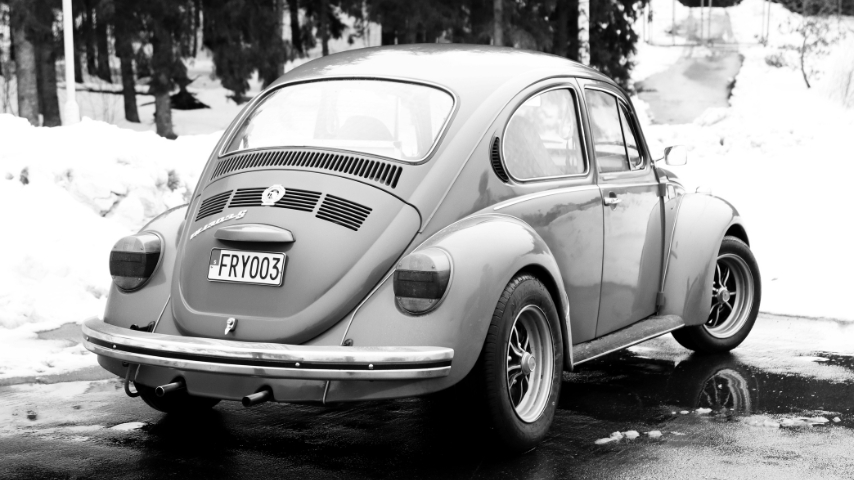Ingenious Pranks That Have Become Engineering Lore
Ingenious Pranks That Have Become Engineering Lore


In honor of April Fools’ Day, ASME.org offers a list of some of the greatest pranks delivered by engineers who take such shenanigans to new heights in creative and fun ways.
The funniest hoaxes are those that are elaborate, harmless, clever, and make you wonder, “How the heck did they do that?” And when it comes to April Fool’s Day stunts delivered with a sense of humor, engineers are among those who take pranks to a new height. In clever ways this creative mischief not only shows how intelligent and technically savvy these students and professionals can be, but they also uphold a tradition that safely delivers rebellious commentary on culture and customs.
The engineers’ canvas of choice for pranking mischief are often treasured, permanent, and large structures such as beloved statues, iconic signs, notable buildings, and very recognizable bridges. They also take on social injustice in the most unusual way and comment on culture. For example, graduating engineers perpetrated a joke at Pennsylvania’s Swarthmore when they participated in one last “Zoom call” at their 2024 commencement.
The following five situations have become the stuff of engineering prankster legend.
In Cambridge you can count on two things when Massachusetts Institute of Technology (MIT) classes are in full swing—traffic and pranks. One hack that started it all (MIT claims beginning the engineering student pranking culture) is a police car appeared on the top of the McLaurin Building’s 150-foot-high “Great Dome.”
In May of 1994—the last day of classes—hackers unveiled the trick that has since been difficult to top. Students placed what appeared—from the ground to any passerby—to be an MIT Campus Police cruiser whose flashing lights were apparent during the day’s early morning hours on top of the giant dome.
“The car turned out to be the outer metal parts of a Chevrolet Cavalier attached to a multi-piece wooden frame, all carefully assembled on the roof over the course of one night,” the MIT Gallery of Hacks explained. And the student’s attention to detail was extraordinary. Not only did the students who set up the joke paint the car, but they included a mannequin dressed up as a police officer. And in the front seat sat a box of donuts. Of course, the police pastries were from Dunkin Donuts—an institution in Massachusetts.
By 10 a.m. the car was disassembled and gone, but the story was the beginning of a tradition that includes the dome being covered by a Captain America shield in 2019 and a 2006 hack where students decked out the Great Dome with a Triforce from The Legend of Zelda video game series that could be seen from the quad.
Hollywood turned 100 years old in 1987, and to celebrate, California Institute of Technology (Caltech) students managed to change that city’s world-famous “Hollywood” sign into a convincing Caltech replica. Undergraduates from Page and Ricketts houses worked together and bought enough black and white plastic and under a cloak of darkness simply converted the California icon into something a bit more friendly to Pasadena by draping it and leaving only “CALTECH” visible.
It was quite a trick. The story was covered by the Los Angeles Times, which painted a picture of the dead of night, the steep slopes of Mount Lee, and the precariousness of “dangling 45 feet in the air.” The paper reportedly heard from a Caltech first-year student who identified himself as “Joe Doe” and told the times, “It’s a 100th anniversary present for Hollywood.”
Among the facts that guides offer to student prospects visiting the Rice University campus is the statue story. It’s part of Rice lore, reported the Houston Chronicle. That’s because engineering students took the one ton, cast-metal statue of beloved William Marsh Rice, founder of the university, and rotated it 180 degrees.
Rice’s gaze moved from facing the administration building to peering into the library. It stayed that way for a “few glorious hours,” the Houston daily diligently reported. The statue, called “Willy” by everyone on campus also houses Rice’s cremated ashes. Among the small pranks that place a Santa hat on top at Christmas and a carved pumpkin over his head at Halloween—this was one of the biggest.
The statue is now probably bolted to the pedestal, but in 1988 it wasn’t. It took 10 students and an anonymous graduate who used two A-frames, a crossbar, and a hoist. The straps used to lift the statue were made of seat-belt fabric. The group used engineering standards and tested their calculations by lifting a car—the “Mastermind’s” Toyota Corolla.
According to the author of the piece, Lisa Gray, a senior at the school at time and a reporter for Rice Thresher, the school’s newspaper, the group’s plans were sound, and the statue was never in danger of harm. Some of the pranksters went on to Silicon Valley. The audaciousness needed for such a prank is the same boldness necessary to launch a startup noted Alex Kazim, part of the original team of eBay. “Startups require audacity,” Kazim said, the kind he hoped other Rice students embrace.
The University of British Columbia (UBC) embraces its tradition of tricks and hacks. One of the most audacious, was when students managed to suspend a full-sized Volkswagen Beetle from the side of San Francisco’s Golden Gate Bridge. This act commemorated another UBC prank that happened years earlier when a similar car dangled from Vancouver’s Lion’s Gate Bridge.
Since such pranks need to pass the harmless-test, engineers needed to run a stress analysis on the bridge, reported Maclean’s on the 2001 incident. And, quite understandably, the perpetrators removed the engine, windows, and wheels to make it lighter and easier to manage. The frame and body were “neatly halved for ease of transport and deployment,” the Canadian publication reported.
The prank also employed a 27m steel cable that was “clipped” to the handrail and the cable crew remained “perched under the bridge.” The flatbed that was used to deliver the car pieces was also their escape vehicle and was connected to the cable with high-test nylon rope which the crew used to perform “a controlled release.” The “car “remained in place for hours until the Highway Patrol, cut the automobile free. And it dropped into the Bay.
Not a student, but a Youtuber and former NASA engineer inspired many to create smart pranks. Mark Rober was fed up when delivered packages were disappearing from his front door. The mechanical engineer dreamed up a mischievous act of what he called “engineering revenge.” He built a “glitter bomb”—a booby-trapped fake package—and left it on his doorstep for thieves to steal.
ASME wrote about this prank that focused on unsuspecting criminals who opened the package. “It smothered them with a pound of glitter and lots of foul-smelling spray. The glitter bomb also housed four hidden smartphones, which tracked the package via GPS, and recorded the thieves’ reactions getting pranked,” the two part, 2019 article reported.
Rober wrote, narrated, and produced a YouTube video covering the gag. “Glitter Bomb 1.0 vs Porch Pirates” presented security cameras to show thieves, sometimes wearing backpacks, grabbing the package and smartphones in the device caught their reactions when they were sprayed with glitter and the stinky spray after opening it.
 “That’s the cool thing about being a mechanical engineer,” Rober told ASME. “If you have an idea, unlike most of the people in the population, you have a much better opportunity to build something physical that achieves a task.” The glitter bomb certainly did that, surprising and shaming local package thieves. Yet it is only the latest success for Rober.
“That’s the cool thing about being a mechanical engineer,” Rober told ASME. “If you have an idea, unlike most of the people in the population, you have a much better opportunity to build something physical that achieves a task.” The glitter bomb certainly did that, surprising and shaming local package thieves. Yet it is only the latest success for Rober.
Over the past seven years, he has parlayed his penchant for complex and zany devices—and slick videos that explain how they work—into a career as a celebrity personality. It was a surprising turnabout for an engineer who had spent years equipping Curiosity Rover for Mars. When he describes his current work and his YouTube journey he explained, “I really do get as stoked and excited about these projects, as it hopefully comes across on camera.”
Cathy Cecere is membership content program manager.
The engineers’ canvas of choice for pranking mischief are often treasured, permanent, and large structures such as beloved statues, iconic signs, notable buildings, and very recognizable bridges. They also take on social injustice in the most unusual way and comment on culture. For example, graduating engineers perpetrated a joke at Pennsylvania’s Swarthmore when they participated in one last “Zoom call” at their 2024 commencement.
The following five situations have become the stuff of engineering prankster legend.
MIT student prank
In Cambridge you can count on two things when Massachusetts Institute of Technology (MIT) classes are in full swing—traffic and pranks. One hack that started it all (MIT claims beginning the engineering student pranking culture) is a police car appeared on the top of the McLaurin Building’s 150-foot-high “Great Dome.”In May of 1994—the last day of classes—hackers unveiled the trick that has since been difficult to top. Students placed what appeared—from the ground to any passerby—to be an MIT Campus Police cruiser whose flashing lights were apparent during the day’s early morning hours on top of the giant dome.
“The car turned out to be the outer metal parts of a Chevrolet Cavalier attached to a multi-piece wooden frame, all carefully assembled on the roof over the course of one night,” the MIT Gallery of Hacks explained. And the student’s attention to detail was extraordinary. Not only did the students who set up the joke paint the car, but they included a mannequin dressed up as a police officer. And in the front seat sat a box of donuts. Of course, the police pastries were from Dunkin Donuts—an institution in Massachusetts.
By 10 a.m. the car was disassembled and gone, but the story was the beginning of a tradition that includes the dome being covered by a Captain America shield in 2019 and a 2006 hack where students decked out the Great Dome with a Triforce from The Legend of Zelda video game series that could be seen from the quad.
Caltech hacks Hollywood
Hollywood turned 100 years old in 1987, and to celebrate, California Institute of Technology (Caltech) students managed to change that city’s world-famous “Hollywood” sign into a convincing Caltech replica. Undergraduates from Page and Ricketts houses worked together and bought enough black and white plastic and under a cloak of darkness simply converted the California icon into something a bit more friendly to Pasadena by draping it and leaving only “CALTECH” visible.It was quite a trick. The story was covered by the Los Angeles Times, which painted a picture of the dead of night, the steep slopes of Mount Lee, and the precariousness of “dangling 45 feet in the air.” The paper reportedly heard from a Caltech first-year student who identified himself as “Joe Doe” and told the times, “It’s a 100th anniversary present for Hollywood.”
Rice technical challenge
Among the facts that guides offer to student prospects visiting the Rice University campus is the statue story. It’s part of Rice lore, reported the Houston Chronicle. That’s because engineering students took the one ton, cast-metal statue of beloved William Marsh Rice, founder of the university, and rotated it 180 degrees. Rice’s gaze moved from facing the administration building to peering into the library. It stayed that way for a “few glorious hours,” the Houston daily diligently reported. The statue, called “Willy” by everyone on campus also houses Rice’s cremated ashes. Among the small pranks that place a Santa hat on top at Christmas and a carved pumpkin over his head at Halloween—this was one of the biggest.
The statue is now probably bolted to the pedestal, but in 1988 it wasn’t. It took 10 students and an anonymous graduate who used two A-frames, a crossbar, and a hoist. The straps used to lift the statue were made of seat-belt fabric. The group used engineering standards and tested their calculations by lifting a car—the “Mastermind’s” Toyota Corolla.
According to the author of the piece, Lisa Gray, a senior at the school at time and a reporter for Rice Thresher, the school’s newspaper, the group’s plans were sound, and the statue was never in danger of harm. Some of the pranksters went on to Silicon Valley. The audaciousness needed for such a prank is the same boldness necessary to launch a startup noted Alex Kazim, part of the original team of eBay. “Startups require audacity,” Kazim said, the kind he hoped other Rice students embrace.
UBC college creativity
The University of British Columbia (UBC) embraces its tradition of tricks and hacks. One of the most audacious, was when students managed to suspend a full-sized Volkswagen Beetle from the side of San Francisco’s Golden Gate Bridge. This act commemorated another UBC prank that happened years earlier when a similar car dangled from Vancouver’s Lion’s Gate Bridge.Since such pranks need to pass the harmless-test, engineers needed to run a stress analysis on the bridge, reported Maclean’s on the 2001 incident. And, quite understandably, the perpetrators removed the engine, windows, and wheels to make it lighter and easier to manage. The frame and body were “neatly halved for ease of transport and deployment,” the Canadian publication reported.
The prank also employed a 27m steel cable that was “clipped” to the handrail and the cable crew remained “perched under the bridge.” The flatbed that was used to deliver the car pieces was also their escape vehicle and was connected to the cable with high-test nylon rope which the crew used to perform “a controlled release.” The “car “remained in place for hours until the Highway Patrol, cut the automobile free. And it dropped into the Bay.
Ingenious glitter bomb
Not a student, but a Youtuber and former NASA engineer inspired many to create smart pranks. Mark Rober was fed up when delivered packages were disappearing from his front door. The mechanical engineer dreamed up a mischievous act of what he called “engineering revenge.” He built a “glitter bomb”—a booby-trapped fake package—and left it on his doorstep for thieves to steal. ASME wrote about this prank that focused on unsuspecting criminals who opened the package. “It smothered them with a pound of glitter and lots of foul-smelling spray. The glitter bomb also housed four hidden smartphones, which tracked the package via GPS, and recorded the thieves’ reactions getting pranked,” the two part, 2019 article reported.
Rober wrote, narrated, and produced a YouTube video covering the gag. “Glitter Bomb 1.0 vs Porch Pirates” presented security cameras to show thieves, sometimes wearing backpacks, grabbing the package and smartphones in the device caught their reactions when they were sprayed with glitter and the stinky spray after opening it.

Over the past seven years, he has parlayed his penchant for complex and zany devices—and slick videos that explain how they work—into a career as a celebrity personality. It was a surprising turnabout for an engineer who had spent years equipping Curiosity Rover for Mars. When he describes his current work and his YouTube journey he explained, “I really do get as stoked and excited about these projects, as it hopefully comes across on camera.”
Cathy Cecere is membership content program manager.








